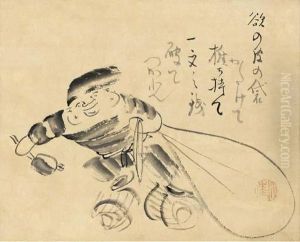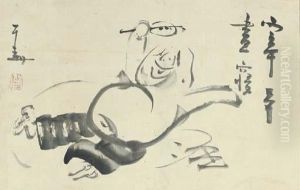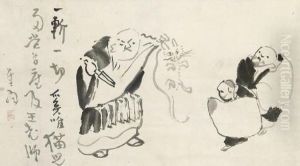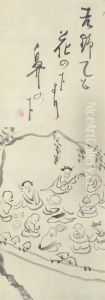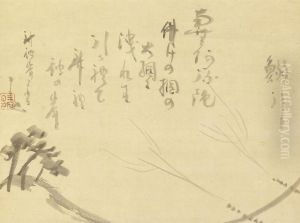Sengai Gibon Paintings
Sengai Gibon was a Japanese monk of the Rinzai sect, known for his distinctive sumi-e (ink wash paintings) and Zen teachings. Born in 1750 in what is now Fukuoka Prefecture, Sengai was orphaned at a young age and entered monastic life early. He became a monk at the age of 11 and eventually became the head priest of Shōfuku-ji, a temple in Hakata, Fukuoka, which is one of the oldest Zen temples in Japan. Sengai spent over 30 years in this position, devoting his life to Zen practice and instruction.
Sengai's artwork is characterized by its simplicity and often humorous content, embodying the Zen principles of directness and economy of expression. He is perhaps best known for his paintings that integrate Zen koans and simple images, which are designed to provoke thought and enlightenment. His works often feature subjects from nature, like birds and flowers, as well as enigmatic figures and calligraphy.
Sengai remained active in his artistic and religious duties until his death in 1837. His legacy is particularly notable for his efforts to make Zen teachings accessible to the lay public through his art. He is considered one of the great figures in the world of Zen painting, and his works are still admired for their lively expression and profound simplicity. They continue to inspire both practitioners of Zen and art enthusiasts around the world.


